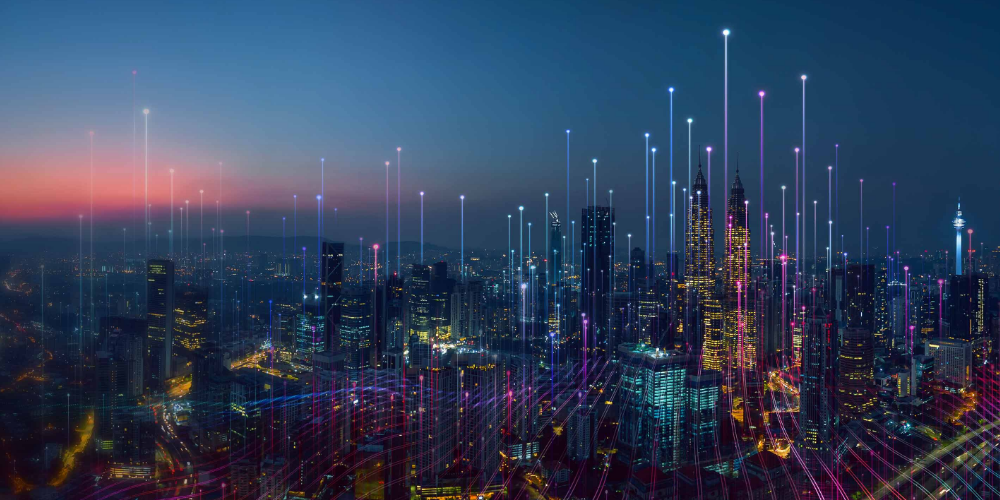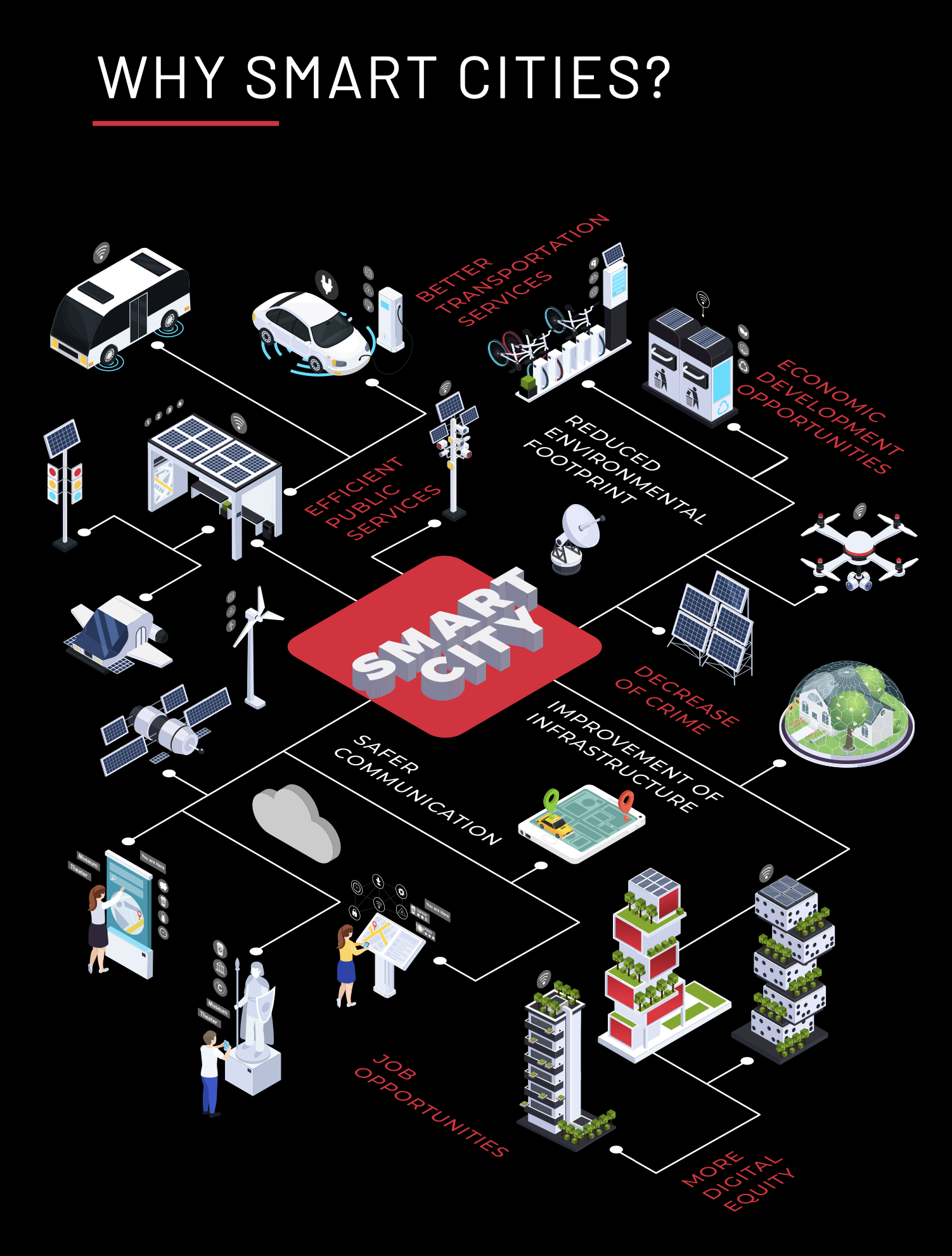
Discover how cities around the globe are already embracing the potential of advanced hardware and software technology to create interconnected and complementary systems that make daily life easier, more efficient and more sustainable. Delve into the components that make up a true smart city, and uncover the opportunities that are still waiting to be realised. Get ready to be inspired by the possibilities of a truly intelligent urban landscape.
In this white paper, we will cover off on:
- Why smart cities?
- Interconnected and complementary
- Environmental hardware and software considerations
- A world built in 4D
On a global scale, cities are beginning to embrace smart city initiatives with varying success. Singapore, in particular, has made notable headway towards smart city realization. One of their initiatives is a parking guidance system, which gives drivers access to real-time data regarding parking availability. The engineering required cannot be understated, as civil engineering in the design and construction of smart infrastructure is fundamental to all other aspects of a smart city.

The state of play
As smart cities are intended to simplify and enhance the lives of its citizens, the technology underpinning them needs to be user-centric and accessible by design. Smart cities need to be designed with all ages, abilities, habits and preferences in mind. Smart cities, first and foremost, must be complementary, with all systems connecting for a truly seamless flow of data.
The application of AI in city-settings provides benefits in automation and efficiency, however advancements also come with concerns around regulation, with issues including service discrimination, privacy, legal, and ethical matters.
Human Centred Design
A fundamental consideration when optimizing the hardware and software for smart city applications. Smart cities are constructed in different ways. They can be retrofitted, wherein the technology is integrated with pre-existing infrastructure.
However, as smart cities start to be built from the ground up, it’s logical for the technology infrastructure to be laid down ahead of the city being built on top of it. The IT infrastructure, then, needs to be heat resistant and protected from radiation.
The success of smart cities is largely dependent on the network connectivity and devices which allow citizens to access real-time information. Display solutions are key contributors to automated data and control, and the resulting environment an individual seeks to engage with – from parking and transport, to security and public events.
4D SYSTEMS is renowned for the customizability of its technology, from solar-powered vehicles to complete building automation systems.
Read the full White Paper
Subscribe to our newsletter
Latest White Papers

Choosing the HMI (Human-Machine Interface) components that your users interact with is a key part of the product development process. But deciding how to produce your intelligent display, which display to buy, to what degree you customize it – and even considering building one from scratch – can be a tough commercial choice. In this whitepaper we provide a comprehensive overview of key commercial factors to consider when evaluating these options.

Touchscreens, accelerated by health concerns like COVID-19, have replaced traditional controls, merging functionality with practicality. 4D Systems leads this transition with aesthetically pleasing display modules enhancing user experience. Partnering with Henlo & Co, a South African premium espresso machine maker, 4D Systems integrated their gen4 modules, improving brewing through data analytics, consistent execution, and precise ingredient measurement. This collaboration showcases the display solutions' potential in elevating operational efficiency and user-centricity in modern appliances.

Intelligent display solutions are the crucial link between automated data and personalised micro-environments. These solutions are the cornerstone of smart homes, controlling everything from lighting and temperature to security and entertainment. Cutting-edge technology seamlessly integrates the physical world with the digital realm. Let’s explore the fascinating world of display solutions and the role they play in shaping our connected future.

